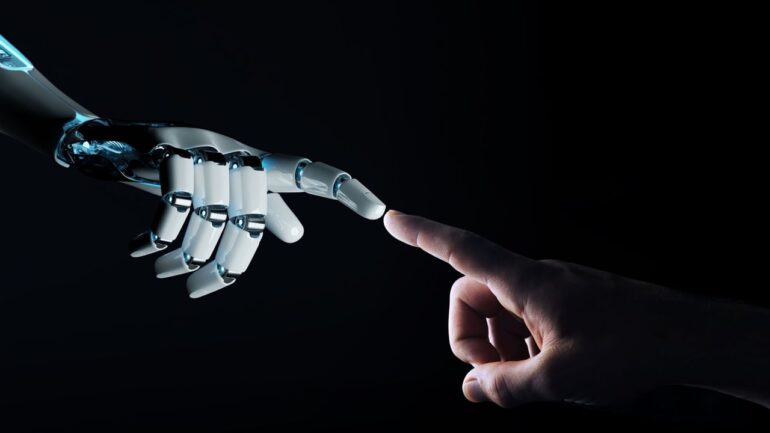🔴 Website 👉 https://u-s-news.com/
Telegram 👉 https://t.me/usnewscom_channel
Despite decades of progress since the industrial revolution, workplace conditions are declining and becoming more dangerous. U.S. workplace fatalities have increased since 2021, rising to over 5,280 deaths in 2023.
Unfortunately, a lot of these casualties impact utility workers, the people climbing high-voltage transmission towers, flying through the trees in helicopters to inspect lines, or walking miles of pipeline in extreme weather.
With aging infrastructure declining by the minute and worsening climate events becoming more commonplace, these jobs are only becoming more dangerous.
Technology, specifically unmanned aerial vehicles (UAVs), can play a key role in mitigating these challenges.
Antiquated utility inspection methods
America’s grid and pipeline infrastructure is decades old, with some of it dating back to the nineteenth century. To put it in perspective, 70% of power transformers are 25 years or older, 60% of circuit breakers are 30 years or older, and 70% of transmission lines are 25 years or older.
Inspections are still largely performed the same way they were years ago. Workers visually scan for damage from helicopters, climb towers by hand, or walk pipelines to check for leaks and corrosion.
Relying solely on the human eye is not just inefficient, it’s dangerous. As extreme weather events become more frequent, workers head into storms, wildfires, and rugged terrain to detect damages. With new emerging tech and advanced data and image capture capabilities, there is no reason people should be put in these hazardous conditions to inspect infrastructure.
Nascent technologies show promise
Other industries have already started to replace hazardous work with emerging technology like robots and AI. Manufacturing facilities use sensor-equipped machinery and ergonomic improvements to prevent injuries. Bomb crews in Brisbane, Australia broke their record for bomb diffusions last year thanks to five robots that kept them out of harm’s way. Gas companies deploy robotic crawlers to inspect underground pipelines beneath roads and railways.
There is a larger opportunity to incorporate UAVs to support these jobs. UAVs have already advanced far beyond aerial photography and package delivery. Equipped with thermal and LiDAR sensors, they can spot overheating electrical components before they spark fires, detect structural cracks invisible to the human eye, and identify gas leaks that would otherwise go unnoticed.
Now, UAVs can fly beyond the visual line of sight (BVLOS), meaning they can operate for multiple hours covering distances of 50 miles and more in single flights. By taking on these missions, UAVs dramatically reduce the need for workers to climb towers, fly low in helicopters, or walk hazardous terrain.
This is just the beginning of UAV potential. Imagine a swarm of small autonomous robots that could map and inspect confined or underground spaces like ventilation shafts, sewers, chemical storage vaults, using simultaneous localization and mapping (SLAM) and sensor fusion technologies.
The impact beyond safety
The safety benefits are clear, but the use of UAVs in monitoring critical infrastructure also have a direct benefit in cost savings.
The use of UAVs can reduce injury and therefore reduce worker’s compensation costs and yield more affordable insurance. Additionally, more effective inspections prevent infrastructure breakdowns, leaks, and catastrophic disasters, avoiding the significant cost of such events. Gas leaks cost U.S. fire departments nearly half a billion dollars each year, and significant losses of earnings for the affected Energy companies.
The impact goes far beyond monetary. When we remove pilots from the cockpits, it reduces a lot of the carbon emissions. Manned helicopters consume 20x more fuel than a long-range UAV, resulting in a 95% reduction in carbon footprint. A win for the environment and the organization.
Humans and tech in the energy sector
To be clear, this technology isn’t replacing humans, it’s helping to shift their responsibilities. At the end of the day, no matter how much AI advances and data analytics are available, someone halfway across the world cannot do the hands-on maintenance needed on a powerline in Texas.
We still need humans in the equation to make the critical repairs. But UAVs can keep those crews out of the most dangerous environments, shifting their role from frontline risk-takers to technology-enabled inspectors.
Integrating UAVs into inspection and maintenance processes can protect the people doing the work, while offering a more affordable and greener solution for keeping America’s critical infrastructure intact.
We’ve featured the best drone.
This article was produced as part of TechRadarPro’s Expert Insights channel where we feature the best and brightest minds in the technology industry today. The views expressed here are those of the author and are not necessarily those of TechRadarPro or Future plc. If you are interested in contributing find out more here: https://www.techradar.com/news/submit-your-story-to-techradar-pro

